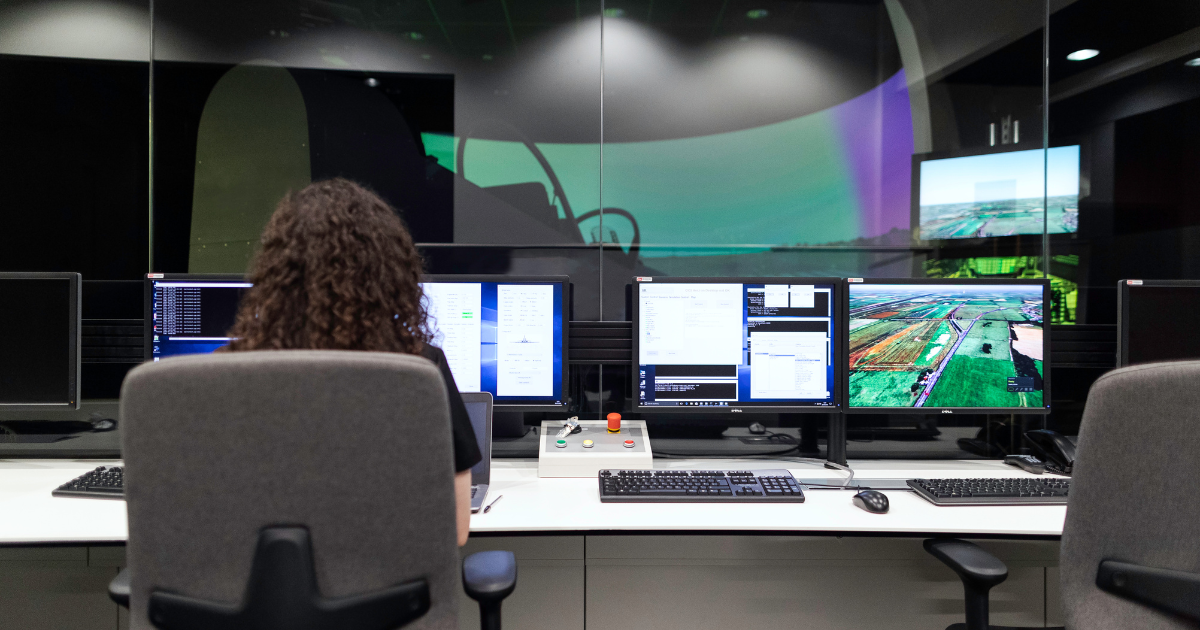What is a mobile application?
Mobile applications are application software designed and implemented to run on smartphones, tablet computers, and other mobile devices with an operable graphical user interface (GUI) to perform certain tasks. They are a rapidly developing segment of the global mobile market and can be downloaded through USB / WIFI or can be downloaded by a web server over the internet. It is necessary to differentiate mobile applications from traditional ones.
While mobile applications are designed and implemented to support mobility devices, the traditional ones are more likely implemented to run on desktop computers. The former is also aware of the environment in which it runs and adapts according to its computing, user, physical, or time context which is known as context awareness computing. Thus, mobile applications require specialized and different testing technologies.
Types of mobile applications
There are mainly three types of mobile applications: mobile apps, mobile web applications, and hybrid mobile applications.
Mobile apps, known also as App4Mobile, are native mobile applications deployed and executed on mobile devices with limited resources and driven by user inputs. These applications usually depend on native mobile API “Application Programming Interface” and dongles on mobile devices such as cameras. This kind of application can be seen as an offline application that could be run and used without the need for an Internet connection driven by the user and make use of contextual information to generate context-based output. This type of application is built for a specific platform with the platform software development kit (SDK) tools and languages, typically provided by the platform vendor.
Mobile web applications are server-side apps built with any server-side technology. Mobile web client software is run and used over a web browser. It’s an online application form that could be run using an Internet connection such as a YouTube application. Some applications could be hybrid forms applications. These applications run on the device and are written with web technologies (HTML5, CSS, and JavaScript) it is run inside a native container, and leverage the device’s browser engine (but not the browser) to the HTML and process the JavaScript locally.
Since mobile devices are almost always logged in to the mobile network, it makes mobile applications always connected. The mobile network may vary in speed, reliability, and security. Therefore functional testing has to be performed in different networks and connectivity scenarios. The graphical user interface must be tested on different devices to test the ease of use or convenience of the mobile applications. The mobile application has to be easy to install, easy to access, and easy to use. Mobile Applications Usability Testing Challenges and Methodologies are discussed in detail.
The availability of various mobile devices
The availability of various mobile devices supported with different software features, hardware components, and operating systems makes the testing process more and more difficult. To make sure that the application is compatible and functional for all devices we demanded to perform testing on varied combinations of devices with the right combination of OS. This covers the characteristic of supported devices or platform-appropriate characteristics, a new programming language designed to support mobility, managing resource consumption, and handling GUIs.
Therefore, conventional testing techniques need to be revised to be applied to new mobile programming languages. Context Awareness means that mobile applications use data provided by context providers, which are sensing like light and connectivity devices. Those devices may provide a huge amount of inputs that vary depending on the environment and/or user actions. This requires context-specific test selection techniques and coverage criteria to be introduced. They should be unique and not be a mirror of what your competitor provides. This will add value to your application. The level of enjoyability and entertainment are important features to differentiate any mobile application. Mobile applications tend to be more focused and have more determinant purposes, dealing with short-duration activities. There are several factors to be kept in mind while designing mobile applications such as using mobile applications in different places either quiet, appropriate, or crowded and noisy.
Mobile applications testing scopes and types
The term Mobile application testing refers to testing the activities for mobile applications on mobile devices using well-defined software test methods and tools. Testing is needed to ensure the quality of service (QoS), mobility, usability, interoperability, mobile connectivity, security, and privacy, are working as desired. Mobile applications are getting more and more complex, which makes testing their stability and robustness necessary.
The mobile applications testing process is complicated for several reasons: high dynamicity in the mobile phone manufacturing world, frequently updating software, and lack of unified supporting test operations where each application has its own unique business and data flow. Testing mobile applications can be done using different approaches for different objectives, that is, hardware compatibility, software reliability, application functionality, etc… Some testing mobile application purposes are summarized as follows:
- Mobile function and behavior testing: this refers to checking the validity of mobile functions and behavior under all possible situations.
- Mobile system QoS testing: check the mobile application scalability –ability to handle a growing amount of work in a capable manner -, reliability –consistency-, availability –instant connectivity and operation-, and performance.
- Mobile interoperability testing (compatibility): checking the mobile application crossing different platforms to make sure that the application is compatible with other applications and promotes cross-use functionality.
- Mobile usability and internationalization testing: internalization refers to reviewing the design and development of software or Web applications to make sure they can be easily adapted to various linguistic and cultural environments without additional programming. Internationalization reduces the time and cost of getting a product to international markets and facilitates the localization of the product in a specific market. Usability includes text visibility in the selected language, navigation between screens, and functionality online/offline.
- Mobile system security testing: concerning the privacy of personal and business stored information on mobile devices including inscription/decryption techniques used for sensitive data. Attacking security may come from means of communication like SMS, MMS, WiFi, and Bluetooth, or may exploit software vulnerabilities from
both the web browser and operating system.
Other dimensions of testing include: mobile multi-tenancy testing “validates Software as a Service -SaaS- features, and QoS requirement, and mobile connectivity testing” which validates mobile applications in different wireless network connectivity and context environment. System mobility testing “validates location-based mobile system functions, data, user accesses, and services”.
Mobile applications testing requirements and features
We are moving from a PC society to a mobile society, which has become a dominant phenomenon, where more processes are done by mobile devices, and more personal and business information is stored and accessed from these devices. Unlike conventional application testing, the mobile application has a set of distinct requirements and features, such as:
- Testing anytime and anywhere: mobile applications are accessible at any time and anywhere; therefore mobile application functions should be correct anytime and anywhere.
- Testing crossing mobile platforms and browsers on a variety of mobile devices: mobile devices have different operating systems; display dimensions, hardware appliances, and battery operation time. Therefore testing mobile applications must be conducted on a selected device with a diverse mobile platform.
- Testing for good and rich mobile experiences: mobile applications are designed and developed to support highly experienced users by providing multiple input channels, rich media features, native application interfaces, and hardware equipment.
- Testing using large-scale mobile simulation and virtualization: This is required to evaluate mobile application performance and scalability so that hardware costs can be reduced.
- Testing with diverse network connectivity: mobile applications must be validated under different network connectivity and related contexts, because mobile devices support diverse wireless network connectivity (such as 3G, WiFi, and Wi-Max).
Mobile applications testing strategy
Mobile application testing represents many techniques and tools to meet quality requirements and can be classified in different ways. One of these classifications is based on the underlying client and server infrastructure.
There are mainly three approaches to this classification:
1. Device emulator
30%-40% of tests are performed using this approach. In this approach, the quality assurance team validates mobile applications using an emulator on mobile devices with various options like the ability to bypass the network, and the use of an effective scripting language. A tester can easily switch to different device types by simply loading the appropriate device profile.
This is a cost-effective approach because no real devices are needed during testing. Emulators are mostly available for free and different types of testing like user interface, stress, and performance testing can be performed using emulators.
The disadvantage of emulators is that they lack the peculiarities; in case of running the same tests on the same mobile device may not reflect the actual results.
2. Mobile cloud computing solutions
The mobile device can be accessed through the web interface and the applications can be deployed, tested, and managed remotely. This approach is cost-effective since it uses a pay-as-you-use service model, reducing the complexity of the implementation, and keeping tasks and data on the Internet rather than on individual devices providing on-demand access. There are several benefits of using cloud solutions, such as
- reducing the cost through using the rent per hour/ swap devices technique,
- there is no need to cell plan for testing income calls and texts,
- investigating failures by recording video of automated text execution,
- recording device logs to help in troubleshooting,
- availability of a large number of devices for testing and
- the test can be run on several devices in parallel.
3. Real time devices with real networks
Device-based mobile testing, where real mobile devices are purchased and used by enterprise-based test laboratories to validate application functionality, dynamic behavior, and QoS parameters, this approach is cost-consuming as actual devices are needed. The last approach uses automation Tools to avoid manual work, and the quality assurance team automates mobile application tasks to reduce time and cost., Examples of available automation tools for mobile applications are Android, Android instrumentation, QTP(Paid), iOS, and more.
Mobile users have lots of alternatives
According to the research in 2022, the numbers listed below show that mobile users have lots of alternatives in the app markets such as AppStore and PlayStore.
- 39% of mobile users are not happy with their online experience.
- 62% of the people uninstall because the app crashes freezes or has errors.
- 52% of customers are less likely to engage with a company.
With M-Connect by Momentum Suite, you can resolve issues faster with less testing effort and you can use M-Connect for your native app testing, hybrid app testing, and mobile web testing processes.
- Cover your real conditions with real mobile devices,
- Wide range of real device coverage including iOS & Android.
- Test as if you’re holding it physically.
- Give your stakeholder control of the same device with you.
With M-Automate by Momentum Suite, you can reduce your workload and you can use M-Automate for your native app automation testing, hybrid app automation testing, mobile web automation testing, desktop web automation testing, and API automation testing in one screen. You can also create flows for your E2E cross-testing automation process.
- Easy to start by uploading your app or defining your start URL. Manage your environment by creating mobile, web, desktop, and API projects.
- Create your scripts automatically with the built-in mobile recorder.
- Schedule and run your test cases whenever you want.
- Generate pdf reports at different levels and use custom widgets to design your dashboard and monitor testing efforts.



